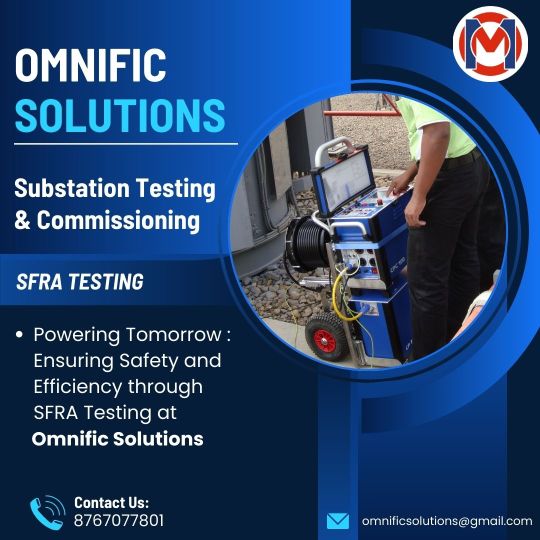#TransformerTest
Explore tagged Tumblr posts
Text
PI Test of Transformer: All You Need to Know
The PI test of transformer is a crucial diagnostic tool used to assess the insulation health of power transformers. Electrical equipment relies heavily on insulation to function safely and effectively. Over time, insulation can degrade due to moisture, temperature, contaminants, and age. The polarization index (PI) test provides insights into the condition of this insulation and helps maintenance engineers make decisions about the operational readiness of a transformer.

PI Test of Transformer: All You Need to Know Transformers are vital assets in any power system. Their failure could cause unplanned outages, equipment damage, or even safety hazards. Conducting the PI test is part of a broader suite of maintenance and diagnostic tests designed to extend the life of the transformer and improve system reliability.
Importance of PI Test of Transformer
The PI test of transformer plays a key role in predictive maintenance. It allows plant operators to schedule downtime in a controlled manner and avoid unexpected failures. By assessing the dielectric properties of the insulation, the PI test estimates how well the insulation will perform under stress. It is widely recognized by standards organizations and used globally. The results of the test not only highlight the health of insulation but also provide a basis for further detailed analysis when necessary. The test is especially useful when a transformer has been exposed to moisture or has been idle for a long time.
Understanding the Concept Behind PI Test of Transformer
To grasp the PI test of transformer, it is important to understand what the Polarization Index (PI) is. The PI is the ratio of insulation resistance measured after 10 minutes to that measured after 1 minute. This gives a simple but reliable indication of the moisture content and contamination in the transformer insulation. A higher PI value suggests good insulation, while a lower value indicates possible degradation. Here is the polarization index formula used: Polarization Index (PI) = IR₁₀ / IR₁ Time (minutes)Insulation Resistance (IR) in MΩ1IR₁10IR₁₀ The result is typically a number ranging from 1.0 to above 4.0. A low PI value often means the transformer insulation has absorbed moisture or contaminants, which can lead to insulation failure. Read More....#PITest, #TransformerTesting, #InsulationResistance, #ElectricalMaintenance, #PowerTransformer, #PIValue, #MeggerTest, #ElectricalEngineering, #TransformerPI, #HighVoltageTesting, #PreventiveMaintenance, #SubstationTesting, #TransformerHealth, #ElectricalSafety, #EngineeringTips Read the full article
#ElectricalEngineering#ElectricalTesting#HighVoltageTest#InsulationResistance#MeggerTesting#PITest#PowerSystems#PreventiveMaintenance#SubstationEquipment#TransformerTest
0 notes
Text
#CircuitBreakerTesting#BreakerCommissioning#ElectricalTesting#SubstationServices#PowerSystemProtection#HighVoltageTesting#LVtoEHV#TransformerTesting#SwitchgearServices#ElectricalMaintenance#GISandAIS#ThermographyTesting#SF6Testing#BreakerServicing#ProtectionTesting
0 notes
Text
Everything You Should Know About Transformer Test Bench

If you're working with transformers, you’ll need a reliable Transformer Test Bench to get accurate results. It’s designed to help you test things like voltage, insulation, and efficiency—critical stuff for ensuring your transformers are in top shape. The best part? It’s easy to use and has all the features you need, like automatic tripping and clear readouts. Whether you're testing small or big transformers, this tool does it all and helps make sure everything runs smoothly!
0 notes
Text

"We're not just testing substations; we're sparking a revolution in reliability at Omnific Solutions, MIDC Koperkairne – where every volt counts!"
Address :
Plot No.A- 814, Khairane Village, TTC Industrial Area, MIDC Industrial Area, Kopar Khairane, Navi Mumbai, Maharashtra 400705, Navi Mumbai (New Mumbai), India, 400705
+91 87670 77801
Mobile
Email
Websites and social links
Website
Pinterest
Twitter
Tumblr
Instagram
LinkedIn
@omnificsolution
#SFRATesting#SubstationTesting#CommissioningServices#OmnificSolutions#MIDCKoperkhairne#NaviMumbai#PowerSystemTesting#ElectricalEngineering#TransformerTesting#HighVoltageTesting#MaintenanceTesting#PowerGrid#EnergyInfrastructure#TestingAndCommissioning#electricalsafety
0 notes
Text

#transformertesting#commissioningservices#electricalengineering#powersystem#highvoltagetesting#transformercommissioning#gridinfrastructure#electricaltesting#powergrid#energyefficiency#electricalsafety#powerquality
0 notes
Text
Best Transformer Maintenance Services in Pune
Vijay Electricals Corporation, situated in Pune, Maharashtra, is a renowned electrical contract service provider. It provides service to both private and Government sectors for over 40 years. Our services include transformer repair, transformer rental, transformer maintenance services like Oil Filtration, Testing , Oil Leakage Rectification work for both Power and Distribution Transformers.
1 note
·
View note
Photo

Transformer bushing prevents flashover and stresses during high voltage carriage. The consequence is enormous when fault happens. Prevent this. Assess appropriately and continuously. #sanggadelimanusantara #sanggadelimaservice #transformerbushing #transformermonitoring #transformertesting
#transformertesting#sanggadelimanusantara#transformerbushing#sanggadelimaservice#transformermonitoring
0 notes
Text
Which Test of Winding is Essential Before Giving Supply to Transformer
Before you energize any transformer, there's one big question to ask: which test of winding is essential before giving supply to transformer? This test ensures that the winding is not damaged, shorted, or improperly insulated. Skipping this step can lead to insulation failure, arcing, or even catastrophic damage.

Which Test of Winding is Essential Before Giving Supply to Transformer Let’s dive deep into the essential test you must perform, why it matters, how to do it, and what it tells you about the health of your transformer windings.
Importance of Winding Tests in Transformers
Before supplying power to a transformer, verifying the integrity of its windings is critical. These windings are responsible for transferring electrical energy between circuits. If they are damaged, the transformer may fail. Testing helps identify insulation weakness, short circuits, winding deformation, and moisture ingress. It is an important part of pre commissioning test of transformer to ensure safety and reliability.
Which Test of Winding is Essential Before Giving Supply to Transformer?
The most essential test is the Insulation Resistance (IR) Test. This test checks the insulation quality between: - Primary and secondary windings - Windings and the transformer core - Windings and the tank (earth) The IR test is simple, fast, and effective. It must be performed before applying any voltage. What Does the IR Test Detect? It helps detect moisture, dirt, insulation aging, and breakdowns. Any of these can lead to a fault if the transformer is energized without testing.
Recommended IR Values for Transformer Windings
Here is a typical table of minimum acceptable insulation resistance values: Transformer Voltage ClassIR Value Between Windings (MΩ)IR to Earth (MΩ)Below 1.1 kV>100>1001.1 kV to 11 kV>200>20033 kV>500>50066 kV and above>1000>1000 Note: Values depend on environmental conditions, such as humidity and temperature.
Test Instrument for Insulation Resistance Measurement
The IR test is conducted using a megger. It is a high-voltage insulation tester. Meggers usually operate at test voltages of 500 V, 1000 V, or 5000 V depending on transformer rating. Procedure for Performing IR Test - Isolate the transformer from the system. - Discharge all windings using grounding rods. - Connect the megger between the windings or between winding and ground. - Apply test voltage for one minute. - Record the insulation resistance value.#TransformerTesting, #WindingResistanceTest, #ElectricalSafety, #TransformerMaintenance, #PowerTransformer, #ElectricalInspection, #HighVoltageTest, #TransformerHealth, #ElectricalEngineering, #PreCommissioningTest, #InsulationResistance, #ElectricalTesting, #WindingCheck, #TransformerProtection, #SafeTransformerOperation Read the full article
#ElectricalEquipment#ElectricalSafety#EngineeringTests#HighVoltage#InsulationTesting#Maintenance#PowerSystems#Pre-SupplyChecks#transformertesting#TransformerWinding
0 notes
Text

"Transforming potential into power, one test at a time - at Omnific Solutions, we're the current champions of Substation testing and commissioning in MIDC Koperkhairne, Navi Mumbai!" @omnificsolution
#OmnificTransformers#SubstationTesting#CommissioningExperts#TransformerTesting#MIDCKoperkhairne#NaviMumbaiEngineering#PowerGridSolutions#ElectricalTesting#ReliabilityTesting#QualityAssurance#TransformerMaintenance#EnergyEfficiency#GridSolutions#AdvancedTestingMethods#PowerInfrastructure#EngineeringExcellence#TransformingPower#ElectricalSafety#GridPerformance#innovationinpower
0 notes
Text
Optimizing Performance: Strategies for Successful Power Transformer Testing & Commissioning

Power transformers are the silent giants that form the backbone of electrical distribution networks. Ensuring their optimal performance is not just a matter of reliability but a critical component of maintaining the integrity and efficiency of the entire power system. The journey of a power transformer from installation to full operation involves meticulous testing and commissioning processes. This blog unravels the strategies and best practices essential for the successful testing and commissioning of power transformers, emphasizing the significance of this phase in optimizing overall performance.
The Vital Role of Power Transformers
Power transformers serve as the linchpin in the transmission and distribution of electrical energy. From stepping up voltages for efficient long-distance transmission to stepping down voltages for safe distribution to end-users, transformers play a crucial role in the power grid. The success of the entire power system depends on the reliability and efficiency of these transformers.
Our team of professionals provides all types of transformer testing and commissioning. We operate at all voltage ranges, including MV, EHV, HV, and LV. In addition, we handle ETC for GIS and AIS substations. We take great pride in having our cutting-edge testing apparatus so that we can rapidly complete the task on our own and do the essential testing of the transformers.
Unveiling the Strategies for Successful Testing & Commissioning
Thorough Pre-Commissioning Inspection: Before the testing process begins, a comprehensive pre-commissioning inspection is paramount. This involves a meticulous review of the transformer's construction, ensuring that all components are in place and meet design specifications. Visual inspections, oil and insulation checks, and examination of auxiliary systems are integral to this phase.
Functional Testing of Components: Each component of a power transformer must undergo functional testing to validate its individual performance. This includes tests on bushings, tap changers, cooling systems, and protective devices. Verifying the functionality of these components ensures that the transformer is equipped to handle various operating conditions.
Dielectric Testing: Dielectric tests are critical for assessing the insulation integrity of a transformer. Power transformers operate at high voltages, and ensuring the dielectric strength of insulation materials is crucial to prevent breakdowns. Common dielectric tests include the power factor test, dielectric absorption test, and insulation resistance test.
Ratio and Polarity Tests: The ratio and polarity tests are fundamental to confirm that the transformer windings are configured correctly. Any discrepancies in the turns ratio or polarity could lead to improper voltage transformation, affecting the overall performance of the transformer. Precision in these tests is vital to guarantee accurate voltage regulation.
Winding Resistance Measurement: Winding resistance measurements provide insights into the health of transformer windings and connections. Deviations from expected values could indicate issues such as loose connections or high-resistance joints. Addressing these concerns during the testing phase prevents potential failures during operation.
Oil Quality Analysis: For oil-immersed transformers, the condition of the insulating oil is a critical factor. Routine oil quality analysis assesses parameters such as moisture content, acidity, and the presence of contaminants. Clean and well-maintained oil contributes to enhanced insulation and cooling performance.
Insulation Resistance Measurement: Insulation resistance is a key parameter for evaluating the insulation condition of a transformer. Insulation resistance measurements help identify any leakage paths or insulation degradation. This test is particularly crucial for detecting issues such as moisture ingress or insulation aging.
Dynamic Short Circuit Withstand Test: The dynamic short circuit withstands test simulates the transformer's response to short-circuit conditions. This test evaluates the mechanical and thermal stability of the transformer under high-stress scenarios. Successful performance in this test ensures that the transformer can withstand fault conditions without catastrophic failure.
Temperature Rise Test: The temperature rise test assesses the thermal performance of a transformer under normal operating conditions. By measuring the temperature rise of key components during full-load operation, this test verifies that the transformer can dissipate heat effectively and avoids excessive temperature levels that could compromise insulation life.
Commissioning with Load: Commissioning a transformer with an actual load is the final step to validate its performance in real-world operating conditions. Monitoring parameters such as voltage regulation, load losses, and overall efficiency during commissioning provides a comprehensive assessment of the transformer's capabilities.

Elevating Transformer Performance through Testing & Commissioning
Reliability Assurance: Thorough testing and commissioning instill confidence in the reliability of a power transformer. Identifying and addressing potential issues during the testing phase mitigates the risk of unexpected failures during actual operation. This reliability assurance is fundamental for the transformer's long-term performance.
Optimal Efficiency: Efficiency is a cornerstone of power system performance, and transformers play a crucial role in energy transfer. Rigorous testing and commissioning ensure that the transformer operates at its peak efficiency, minimizing energy losses and contributing to the overall efficiency of the power grid.
Preventive Maintenance Insights: The data gathered during testing and commissioning provide valuable insights for future preventive maintenance. Understanding the transformer's performance characteristics under different conditions allows operators to develop targeted maintenance strategies, prolonging the transformer's lifespan and reducing the likelihood of unplanned outages.
Compliance with Standards: Adhering to industry standards and specifications is non-negotiable in the power sector. Testing and commissioning processes are designed to verify compliance with these standards, ensuring that the transformer meets the required performance and safety criteria. Compliance is not just a regulatory requirement but a commitment to delivering quality and reliability.
Enhanced Safety: Safety considerations are paramount in power transformer operations. Thorough testing and commissioning uncover potential safety hazards and allow for corrective measures to be implemented. This proactive approach contributes to a safer working environment for maintenance personnel and ensures that the transformer operates within established safety parameters.
Services provided for the testing and commissioning of power transformers.
Offline Testing
• Functional Checking of Protection Devices like PRV, Buchoze Relay, MOG, OTI, WTI
• Dielectric Frequency Response Analysis (DFR)
• Capacitance and Tan Delta Measurement of Transformer
• Transformer Turns Ratio Measurement Ratio
• Magnetic Balance Measurement
• Winding Resistance Measurement
• Insulation Resistance and Polarization Index Measurement
• OTI and WTI Meter Calibration
• Sweep Frequency Response Analysis Measurement
Online Testing
Partial Discharge Measurement and Localization
• Thermography
• Online moisture content Measurement
• Transformer Oil (Screening, DGA and Furan) Test
Conclusion
The journey of a power transformer from installation to full operation is a meticulous process that demands precision and attention to detail. Testing and commissioning are not merely procedural steps; they are integral to ensuring the transformer's optimal performance, reliability, and safety.
By adopting a strategic approach to testing, power utilities, and industries can elevate the performance of transformers, contributing to the overall efficiency and resilience of the power infrastructure.
As the energy landscape evolves, the role of power transformers becomes increasingly pivotal, and the success of this evolution hinges on the thoroughness of testing and commissioning practices. Please click here
#transformertesting#commissioning#powerinfrastructure#electricaltesting#gridperformance#energyefficiency#electricalengineering#utilities#transformermaintenance#powergrid#voltageregulation#testingandcommissioning#energymanagement#optimizedperformance#electricalsafety#powerquality
0 notes
Text

#transformertesting#commissioning#powersystems#electricalengineering#highvoltage#energyefficiency#reliabilitytesting#powerdistribution#electricalsafety#testandmeasurement#transformermaintenance#energyindustry#qualityassurance#gridreliability#powergrid
0 notes
Text
Differential Relay in Transformer: A Complete Guide
The differential relay in transformer is a crucial component in modern electrical systems. It protects the transformer by detecting internal faults like winding short circuits or insulation failures. This relay compares the current at the primary and secondary ends of a transformer. If there's any imbalance, it trips the breaker to avoid damage.

Differential Relay in Transformer: A Complete Guide This guide explains what a differential relay in transformer does, why it might trip, how it compares with other relays, and what happens during CT saturation. We'll also touch on related concepts like differential thermal overload relay and differential control. Relevant keywords like PI Test of Transformer and Fault Current Distribution in Star Delta Transformer are naturally included to enhance topic depth.
What Does a Differential Relay in Transformer Do?
A differential relay in transformer detects internal faults by measuring the difference in current between its two ends. It uses the principle that under normal conditions, the incoming and outgoing currents are nearly equal. Any significant difference implies current leakage due to internal faults. Here’s a breakdown of its core function: FeaturePurposeMonitors CurrentCompares primary and secondary currentsDetects Internal FaultsIdentifies short circuits and insulation breakdownFast ResponseTrips within millisecondsUses CTsOperates with Current Transformers for accurate comparisonWide Fault CoverageDetects ground, phase-to-phase, and turn-to-turn faults In short, the differential relay in transformer acts like a smart sensor and first responder rolled into one.
How Does a Differential Relay in Transformer Work?
Current Transformers (CTs) are installed on both sides of the power transformer. These CTs measure the current on both ends and send it to the differential relay. If the current on one end differs from the other beyond a set limit, the relay operates. During normal operation and external faults, the currents match when adjusted for transformer ratios. But when there's an internal issue, the difference (also called differential current) exceeds a threshold. Equation for Differential Current: Differential Current = IPrimary – ISecondary (after turns ratio compensation) If the differential current exceeds the setting, the relay sends a trip signal to the circuit breaker. This method ensures fast and selective tripping, minimizing damage and increasing transformer reliability.
What Causes a Differential Relay in Transformer to Trip?
Multiple factors can cause a differential relay in transformer to trip: - 1. Internal short circuits – Between windings or to ground - 2. Turn-to-turn faults – Within the same winding - 3. CT Saturation – Distorts the current measurement - 4. Incorrect CT polarity or mismatch – Leads to false differential current 5. - Inrush current during energization – High magnetizing current might resemble a fault - 6. Overfluxing or core saturation – Causes abnormal current waveforms These scenarios result in current imbalance, and if not filtered out properly, can lead to unwanted tripping.#DifferentialRelay, #TransformerProtection, #ElectricalEngineering, #PowerTransformer, #RelaySettings, #TransformerRelay, #CurrentProtection, #DifferentialProtection, #TransformerFaults, #ElectricalSafety, #PowerSystemProtection, #TransformerTesting, #ProtectiveRelays, #SubstationEquipment, #ElectricalRelays Read the full article
#DifferentialRelay#ElectricalRelays#ElectricalSafety#EngineeringConcepts#FaultDetection#PowerSystems#ProtectiveDevices#RelaySettings#SubstationEquipment#TransformerProtection
0 notes
Text
DC Hipot Tester - Testing Equipment
We manufacture, export, and supply the best quality DC Hipot Tester, which are made from high-quality raw materials and advanced techniques. The DC Hipot Tester is a convenient one that lets you stay safe from the defects that can happen in a system.
Features:-
->KV Meter For High Voltage Measurement
->MA Meter For Leakage Current Measurement
->Timer For Testing Time Setting
->Selector Switch For Leakage Current Setting

#DCHipotTester#HipotTester#DCHipot#TestingEquipment#TransformerTesting#transformer#transformeroil#purification#transformeroiltesting#manufacturing#sbelectrotech
0 notes
Text
Primary Injection Test Sets - S.B.ELECTROTECH
We manufacturing, export, and supply the best quality Primary Injection Test Sets that are widely used in various industrial applications for circuit breaker testing, transformer testing, relay testing, and surge arrestor (la) testing purposes. Our Primary Injection Test Set is highly demanded in the market due to its various features.

#PrimaryInjectionTestSet#TestSet#PrimaryInjectionTest#TestingEquipment#TransformerTesting#transformeroil#transformeroiltesting
0 notes
Text
Transformer Testing Equipment - S.B.Electrotech
We are readily instrumental in providing an inclusive variety of Transformer Testing Equipment that can transfer energy by either reducing or increasing the voltage. These products are manufactured with premium-grade raw materials procured from reliable vendors in the market. Our product is used for domestic, commercial, and industrial purposes.

#TransformerTestingEquipment#TestingEquipment#TransformerTesting#transformer#transformeroil#purification#transformeroiltesting#filter#filteration#manufacturing#Engineer#sbelectrotech#Kolkata#WestBengal
0 notes